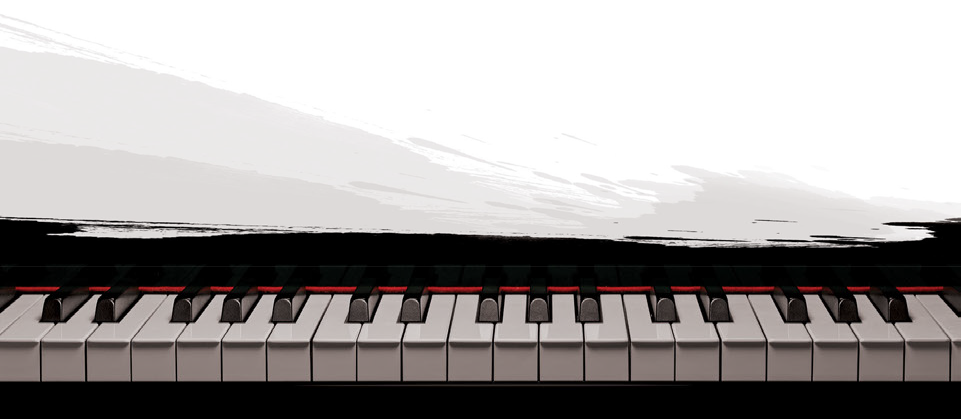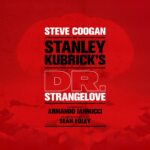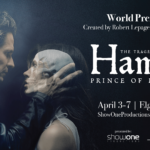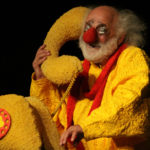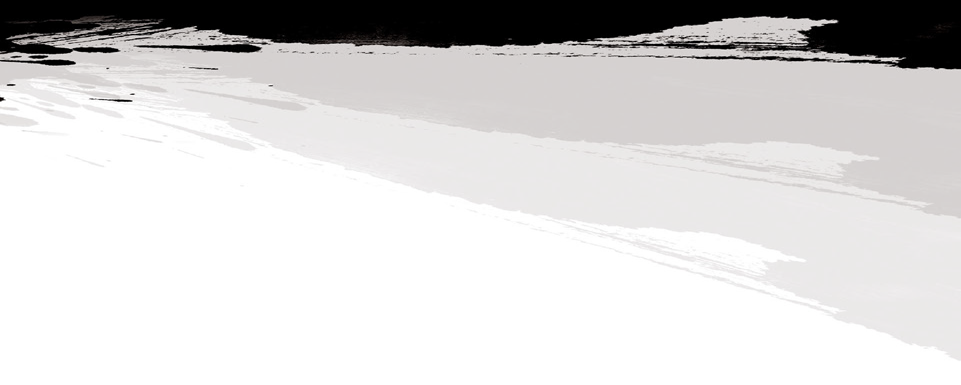
JOHANN SEBASTIAN BACH (1685 -1750)
The Talented Mr. Ripley, 1999; dir. Anthony Minghella
Italian Concerto in F Major, BWV 971
Spanning four volumes, the Clavier-Übung traversed every style and skill set a keyboardist would need to know. Published over a ten year period between 1731-41, it contains some of the most widely known and well-loved of Bach’s keyboard pieces. It is in the second volume we find Bach’s Italian Concerto, so named because it imitates the Concerto Grosso style, popularized by Italian composers, in which the full ensemble is juxtaposed against a small group of soloists.
Use of the Italian Concerto in the film serves a dual purpose; it signals Italy as the location of the drama about to unfold, and is also part of a larger set of musical cues that are attached to the characters. It is through music the viewer tracks with the shifting internal emotions of Ripley who is initially associated with classical music, while the object of his dark obsession, the character Dickie Greenleaf, is associated with jazz. As Ripley’s symbiosis with Dickie grows, the music he associates with shifts.
Solaris, 1972; dir. Andrey Tarkovsky
Chorale prelude BWV 639 “Ich ruf zu dir, Herr Jesu Christ” (“I cry to you, Lord Jesus Christ”)
Notably absent from Tarkovsky films are composed soundtracks. Instead, the director is known for long periods of silence, often only broken by diegetic sounds in a scene—footsteps, water dripping, wind blowing, the crackling of fire—creating intimacy by allowing viewers to engage with the sonic world of the characters. When music is used, it is often works from the established repertoire laden with their own meaning and histories in our lives, attached to experience and emotion. Since the majority of music by Johann Sebastian Bach was written for religious contexts, it is deeply associated with earthly human ritual.
In Solaris, the setting is a space station hovering above the eponymous distant planet in which the characters experience strange occurrences that are linked with poignant memories of life on earth. Bach’s chorale prelude is heard 4 times throughout the film. Each time it connects with a moment of reflection on the meaning of human life, contrasted against detached scientific observation.
Fingers, 1978; dir. James Toback
Toccata in E minor
Largely forgotten in the genre of mobster films, Fingers offers a unique take by juxtaposing two very different worlds, that of organized crime and the concert hall. In the film, Jimmy “Fingers” Angelelli, played by Harvey Keitel, struggles in an emotional netherworld between the expectations of the family business, enforcing debt collection on behalf of his loan shark father, and his own ambitions to become a concert pianist, like his mother. Three pieces of music act as pillars to the soundtrack and mood of the action, “Angel of the Morning” by Merrily Rush, “Summertime, Summertime” by The Jamies, and J.S. Bach’s Toccata in E minor, performed by Jimmy. The piece represents an earlier work of Bach, one of seven toccatas that were written for the hands only (excluding foot pedals, if played on an organ). Toccatas were associated with the fingers (translated often as “touched”) as they were evocative of virtuoso improvisation, or the performer feeling a way through a theme and its possible iterations.
Breaking the Waves, 1996; dir. Lars von Trier
Sonata No. 2 in E-flat minor for flute and harpsichord, BWV 1031 II: Siciliano
“Breaking the Waves” was the first film of Lars von Trier’s Golden Heart trilogy, which includes “The Idiots” (1998) and “Dancer in the Dark” (2000), so named after a book about a young girl who sacrifices herself for the betterment of others. In the film, we meet Bess, a simple woman, pure of heart, who marries Jan, an oil rig worker from another town who is treated with suspicion by the puritanical community to which she belongs. Blissful in her newlywed days, Bess prays fervently for her husband to return as quickly as possible from the oil platform where he is working. A tragic accident that leaves him paralyzed strikes Bess with fear that her request to have him home was deeply selfish, and directly caused the incident. Throughout the rest of the film, she sacrifices herself and her body until it costs her own life.
Throughout the film, music is used sparsely, primarily to accompany the still shot markers dividing the film’s action into acts, or chapters. All of these works are pop tunes from the 1970s, with the exception of Bach’s Siciliano—a type of Italian dance. In 2016 the film was transformed into an opera of the same name by Missy Mazzoli.
The Godfather, 1972; dir. Francis Ford Coppola
Passacaglia and Fugue in C minor BWV 582
Constantly listed amongst the best films of all time, The Godfather unveils the operatic cross-generational story of the Corleones, the first film trilogy that would go on to earn 28 Academy Award nominations across all three films. Based on the 1969 book by Mario Puzo, the film has become famous not only for the narrative, but also the iconic soundtrack composed by Nino Rota, a graduate of the Curtis Institute of Music (where he went due to the urging of Arturo Toscanini) who wrote for iconic Italian directors including Federico Fellini and Luchino Visconti.
One deviation from Rota’s score was in the pivotal baptism scene. Throughout the 5 minute sequence, which juxtaposes the ritual of the church against interspersed shots of Michael Corleone’s ruthless dispense of the heads of the five opposing families, we hear the Passacaglia and Fugue in C minor by Bach. The only such work written by Bach, it pairs the ancient variation form of Passacaglia built upon a repeated baseline, with a double fugue.
GEORGE FRIDERIC HANDEL (1685 -1759)
Barry Lyndon, 1975; dir. Stanley Kubrick,
Suite No. 4 in D minor, III: Sarabande
One of the last four films of Stanley Kubrick, “Barry Lyndon” adapts the 1844 novel titled The Luck of Barry Lyndon by William Makepeace Thackeray. A unique visual feature of the film is the cinematography, which calls for some scenes to be lit only by candlelight. To recreate the world of social-climbing rogue, Lyndon, Kubrick explored various Baroque works to use as the soundtrack for the action. One piece that is used recurrently to connect various scenes is Handel’s Sarabande from the Suite No. 4 in D minor. A predecessor to the keyboard sonata, suites were early multi-movement works constructed by stringing together a series of dances, typically introduced with a prelude. The Sarabande, typically included as one of the movements in a suite, was a dance in triple meter that underwent a transformation over time that changed it from a lively fast pace to a slow and stately dance. In the film, the work was orchestrated to maximize the dramatic impact for the big screen.
Autumn Sonata, 1978; dir. Ingmar Bergman
Chaconne with variations in G Major, HWV 435
Autumn Sonata is a searingly moving depiction of a relationship at the crossroads and the costs associated with blindingly intense ambition and in the life of an artist. Charlotte is a concert pianist who has spent much of her career absent from her family, keeping her distance even in the moments of their greatest need. This history comes to a head when she finally visits her daughter, Eva, caretaker for another daughter, Helena, who is dying. Visual reinforcement of the mother-daughter dynamic is heightened with close shots framed in small, tight, spaces that use physical proximity to shed a bright light on their emotional distance.
The chaconne was a form of dance accompanied by music that spun a set of free variations over a repeating baseline or harmonic progression. In his HWV 435, Handel further elaborated on the chaconne by providing twenty-one full variations. It was first published in 1733.
HENRY PURCELL (1659 -1695)
The Draftsman’s Contract, 1982; dir. Peter Greenaway
Ground in C minor, ZD 221
A costume drama murder mystery set in 1694, The Draftsman’s Contract tells the story of Mrs. Herbert and her dealings with a young, arrogantly confident artist, Mr. Neville. On the surface, the narrative revolves around a set of 12 drawings that Mrs. Herbert commissions Mr. Neville to produce of her family’s house and property. However, as the action progresses, so do the twists and turns revealing intrigue and blackmail.
Throughout the film, composer Michael Nyman utilized elements of music by Purcell, whose short life took place during a remarkable period of British history, and whose career started in the Chapel Royal, extending into working under multiple sovereigns. Baroque grounds were repeating bass lines over which a melody and its variants were written. Nyman’s clever usage included Purcell grounds paired with new melodies and incorporating some modern instruments such as electric bass and saxophone.
JEAN-PHILIPPE RAMEAU (1683 -1764)
Jean-Philippe Rameau was a French composer and music theorist. The son of an organist, he was the 7th of 11 children. Records of the early years of his career are spotty at best, but Rameau re-appeared following in his father’s footsteps as an organist, eventually making his way to Paris, and collaborating with the likes of Voltaire. Over the course of his career he would become so well known that when he died three memorial services were held in his honor. Rameau was renowned for his text, Treatise on Harmony, and his many operas, motets, and keyboard works. Of his works, the Pièces de Clavecin, three collections of harpsichord music written in 1706, 1724, and 1726-27, have become beloved for their wit and color. In these suites, vivid images are evoked and elusive emotions are brilliantly portrayed in each movement. Their vibrancy has made them prime works to integrate into the cinema. The following four films feature the music of Rameau in their soundtracks.
4 Days in France, 2016; dir. Jerome Raybaud
From “Pièces de Clavecin” in E minor, Le rappel des oiseaux (The calling of birds) and Tambourin (Tambourine)
The film 4 Days in France, a modern iteration of the road-trip movie genre, follows Pierre, who one day without warning leaves the Paris apartment he shares with his partner Paul. Embarking on a road trip without a destination, using his Grindr app as his only navigation tool, he forms a series of short term connections—both transactional and meaningful—with various characters he meets along his way.
The Handmaiden, 2016; dir. Park Chan-wook
From “Pièces de Clavecin” in E minor, La Villageoise (The Villager)
Known for his handling of brutal subjects and intense, often unfathomable, complexity, Park Chan-wook’s The Handmaiden has been described as a story rooted in Gothic thrillers. On the surface the narrative rests on a central deception meant to con a woman out of her inheritance, but underneath, as Matt Zoller Seitz remarks, “[it’s] about a lot of things, among them trust and vulnerability, imprisonment and freedom, and the façade that individuals create, and that society imposes from without.”
Casanova, 2015; dir. Jean-Pierrel Jeneut
From “Pièces de Clavecin” in D Major, Les tendres plaintes (Tender complaints), Les Niais de Sologne (The Fools of Solon), Les Soupirs (Sighs), La Joyeuse (The Joyful), L’entretien des Muses (Conversation of the Muses), Les Cyclopes (Cyclops)
The legendary memoirs of Giacomo Casanova provide more than their fair share of dramatic, poignant, funny, and absurd stories, which is why his life has been the subject of so many cinematic portrayals. Though his reputation as a womanizer is the facet that has held the public’s attention most securely, Casanova also performed some unexpected accomplishments such as a translation of the Iliad, between his duals and jailbreaks.
POLINA OSETINSKAYA
About the Artist
Internationally renowned pianist Polina Osetinskaya began playing piano at age five and was soon designated a wunderkind in the former Soviet Union, giving her first concert at the age of six. She entered the Central School of Music of the Moscow Conservatory and continued her studies at the Leningrad Conservatory with Marina Wolf, later attending the Moscow Conservatory training with the legendary Vera Gornostaeva.
Osetinskaya appears on world stages including Stern Auditorium at Carnegie Hall, Barbican Hall and the Musikverein Vienna, as well as at her alma mater. She performs recitals in Rome, Tokyo, Milan, Brussels and across the US, appearing at festivals throughout Europe and North America. She collaborates regularly with chamber partners including Maxim Vengerov and with prestigious orchestras like the Chicago Symphony, where her next appearance is planned for Fall 2023.
In recital, Osetinskaya is known for her experimental programs, juxtaposing works by contemporary composers with traditional classical repertoire. She is very much at home with post–avant-garde composers such as Valentin Silvestrov, Leonid Desyatnikov, and Arvo Pärt, presenting her project An Unknown Friend at Carnegie Hall with famed actress Kseniya Rappoport. She has recorded on the Quartz, Naxos, Sony Music, Bel Air, and Melodiya labels. Osetinskaya has been awarded the Maly Triumph prize, and has authored the bestseller Farewell, Sadness — an autobiographical account of her wunderkind years. Since 2022, Osetinskaya has spoken out against Russia’s war in Ukraine and faced numerous cancellations of her performances in her home country.
ABOUT THE PRESENTERS
Cherry Orchard Festival
Celebrating the international arts in the heart of New York City and beyond, the Cherry Orchard Festival Foundation works to introduce and promote global cultural activity and an exchange of ideas, to enlighten and engage an inter-generational audience through entertaining and educational programs in all arts genres.
Since its founding, the festival has consistently presented renowned international works of performing and visual arts to US audiences. Our goal is to increase access to the arts; as such, we are committed to offering flexible ticket prices, and planning at least one event every season that’s free of charge. We are constantly searching for the newest, most daring projects, acclaimed in the international arts arena, to introduce to our audiences in New York and in major cities across North America. Visit cherryorchardfestival.org to find out more about upcoming events.
Cherry Orchard Festival Team:
Maria Shclover, Founder & Producer
Irina Shabshis, Founder & Artistic Director
Dasha Korol, Director of special events
ArtCats DE – web design
Anna Yudina, digital marketing
Michelle Tabnick PR, public relations
Kathryn Bacasmot, program notes
Vladimir Kevorkov – graphic design
DMGraphicCenter, LLC, printing services
Show One Productions
Tonight’s co-presenter, Show One Productions, headed by Svetlana Dvoretsky has presented some of the world’s greatest symphony orchestras, ballet companies and dance and theatrical productions across Canada for almost 20 years. With collaborations including the premiere of the theatrical Brodsky/Baryshnikov, and the exclusive, once-in-a-lifetime performance of Dmitri Hvorostovsky in 2017. Svetlana Dvoretsky is also one of the founders/producers of Lighthouse Immersive Inc., which since 2020 has created the sensational Immersive Van Gogh exhibition and other immensely popular immersive art experiences across North America.
